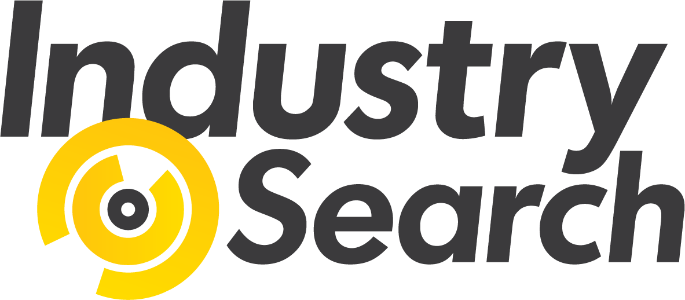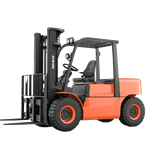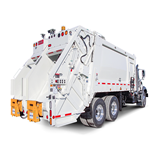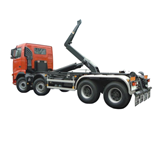Key takeaways
- Typical used-truck price bands:
- Light-duty (LR/LCV to ~8 t GVM): ~$15,000–$55,000
- Medium rigid (8–12 t GVM): ~$35,000–$95,000
- Heavy rigid (12 t+ GVM): ~$60,000–$160,000
- Prime movers (high-km fleet stock to late-model): ~$80,000–$300,000+ (late-model European/Japanese units frequently list $180k–$260k).
- Market pulse: Australia recorded an all-time record of 51,277 new commercial vehicles (trucks & vans) registered in 2024, signalling strong replacement cycles that feed the used market with later-model stock.
- Fuel matters: Diesel is often your #1 operating cost. Use current AIP weekly diesel averages for budgeting and consider the Road User Charge (RUC) currently 32.4 c/L, which affects fuel tax credits for heavy vehicles
- Compliance is non-negotiable: Check NHVR mass, dimension & loading rules, ADR 80/03 emissions, and (where relevant) NHVAS maintenance accreditation history before you buy.
- Registration & insurance: Rego charges vary by state, axle config and GVM; NSW publishes worked examples and fee tables. Insurance can range from a few thousand dollars per year, depending on value, radius and risk profile.
Introduction: Why a local, numbers-first guide matters
Shopping for a used truck in Australia is a balancing act between price, task fit, compliance, and total cost of ownership. Whether you’re upgrading a light rigid for metro deliveries, adding a heavy rigid tipper, or sourcing a highway prime mover, this guide gives you Australian-specific pricing bands, regulatory must-knows, and checklist-level actions, with recent, credible sources, so you can buy with confidence and budget accuracy. We also reference new-truck market movements (a lead indicator for used supply and pricing) and fuel/charge settings that materially affect your ongoing costs.
Price guide: What used trucks cost in Australia
Prices vary by age, kilometres/hours, brand, spec, body, service history, emissions level, and demand cycles. These live market bands reflect current listings and recent guides.
Light-duty trucks (to ~8 t GVM, incl. popular Japanese LCV cab-overs)
- Typical used price range: $15,000–$55,000
- Use cases: metro deliveries, trades, refrigerated last-mile, small tippers.
- What pushes price up: auto transmissions, late-model Euro 5/6, fridge bodies with recent compressors, tail lifts, service bodies, verified low km.
Medium rigid (MR, ~8–12 t GVM)
- Typical used price range: $35,000–$95,000
- Use cases: regional freight, medium tippers, curtain-siders with tail lifts.
- Price drivers: gearbox type (AMT/auto), curtain sets and load-restraint gear, tail-lift capacity/age, documented maintenance.
Heavy rigid (HR, 12 t+ GVM)
- Typical used price range: $60,000–$160,000
- Use cases: construction tippers, garbage compactor chassis, beaver tails, heavy curtains.
- Price drivers: body age and certification, PTO hydraulics, diff locks, retarder, late-model emissions, alloy bullbars and tanks.
Prime movers (single/BDoubles/B-triples capability depending on spec)
- Typical used price range: $80,000–$300,000+
- Late-model Euro/Japanese/US prime movers with ~400–700k km and safety tech commonly list $180k–$260k; prestige/high-power or very low-km units exceed $300k.
Tip: Check several marketplaces and dealer sites in the week you buy, then take a 3-month moving average of comparable listings to avoid paying at the top of a temporary spike.
What drives price (and how to use each lever)
- Kilometres/engine hours: Lower km/hours usually command a premium; highway km is kinder than stop-start/vocational cycles.
- Emissions level: Later ADR-compliant engines (Euro V/VI equivalents under ADR 80/03) tend to fetch more and may unlock metro contracts.
- Body & fit-out: Refrigerated, crane, tipper, compactor, or curtain bodies in certified condition add value; new curtains, rails, gates and load-restraint upgrades are a plus.
- Safety & tech: EBS/ESC, lane support, collision mitigation, and telematics packages support higher prices and better insurability.
- Service history: NHVAS-maintained fleets with complete service records are worth more (and are lower risk).
- Tyres & driveline: Quality tyres with strong tread depth, recent clutch or injector work, and brake/air system overhauls justify higher ask.
The Australian cost stack: Beyond the purchase price
Budget with live local inputs, not guesswork. Here’s how to structure total cost of ownership (TCO):
- Fuel: Use AIP weekly diesel averages for your region. Even 2–3 L/100 km variance on a prime mover at 180,000 km/year is a five-figure swing.
- Road user charge (RUC): Currently 32.4 c/L and scheduled to step up 6% annually through 2025–26 (affects fuel tax credit netting for eligible heavy vehicles).
- Registration: Depends on state/territory, GVM and axles; NSW maintains public fee tables (quarterly and half-yearly options exist).
- Insurance: Risk-rated by value, radius, driver profile, telematics, cargo, and garaging; a few thousand dollars per year is common for many operators, but complex risks can be materially higher.
- Maintenance: Plan scheduled servicing, tyres, brakes, cooling, emissions after-treatment (DPF/SCR/AdBlue).
- Finance: Compare total repayment cost and balloon structures; asset-backed finance is common (section below).
- Downtime: A day off the road can cost more than you save buying a cheaper but unreliable unit.
Compliance & standards you must check
- NHVR mass, dimension & loading – Confirm your intended GVM/GCM, axle spacings, wheelbase, body length/overhangs, and load-restraint compliance before you commit. Overstepping by a small margin can kill a deal or your payload.
- ADR compliance – Key rules for heavy vehicles include ADR 80/03 (emissions) and current braking/stability ADRs depending on vehicle age and category. Verify the compliance plate and build plate numbers that match the advert and PPSR.
- NHVAS (where relevant) – Buying ex-NHVAS Maintenance operators can indicate stronger maintenance systems; ask for audit history and defect clearance records.
- Registration class & transfer – Confirm prior rego class matches the configuration; some changes (e.g., adding a lazy axle, retagging GVM, body swaps) may require engineering sign-off and fresh inspection.
Pre-purchase inspection: A field-tested checklist
Use the following as a minimum, adapted from accepted heavy-vehicle inspection standards. For formal maintenance-standard coverage, reference the NHVR inspection checklist.
Driveline & engine
- Cold start: look for smoke, blow-by, rough idle.
- Oil analysis (optional): cheap insight into wear metals.
- Turbo/boost leaks, coolant/oil cross-contamination.
- After-treatment: DPF ash load %, forced regens history, SCR/AdBlue faults.
Transmission & axles
- AMT shift quality, clutch take-up, diff noise, hub play.
- Check ratio tags (suited to your highway/metro duty).
Brakes & suspension
- Air leaks, governor cut-in/out, EBS faults, drum/disc condition.
- Ride-height valves, airbags, bushings, shocks, spring packs.
Steering & chassis
- Free play, box leaks, chassis rails for cracks, prior repairs, cross-member corrosion.
Body & ancillaries
- Refrigeration hours/compressor age; tail-lift WLL & service stickers; crane proof load certs.
- Curtains/rails/gates condition; PTO function and leaks.
Tyres & wheels
- Matched pairs, age codes, irregular wear (alignment/suspension clues).
Electrical & safety
- All lighting, worklamps, ABS/EBS, lane/collision systems.
- Telematics status, spare keys, immobilisers.
Paperwork
- PPSR (finance encumbrance, write-off check), logbooks, NHVAS maintenance records, defect clearances, ADR plate, VIN/build plate match.
Tip: Pay for a qualified heavy-vehicle inspection and scan for active/inactive fault codes. The cost is trivial compared to an injector set, AMT clutch, or DPF/SCR replacement.
Financing used trucks in Australia
Asset finance for used trucks is mainstream. Focus on total cost over term, not just weekly repayment.
- Common products: chattel mortgage, hire purchase, finance lease, operating lease.
- What lenders assess: truck age/km, borrower financials, deposit (often 10–20%), balloon/residual, insurance, and utilisation.
- Rate drivers: asset age and spec, LVR, credit strength, bank vs. non-bank, and macro rate settings.
- What to avoid: over-large balloons on high-km assets; balloon + resale value risk can be painful in a soft market.
Regional and body-type nuances that shift price
- Metro vs regional: Metro fridge bodies with recent compressors and service history tend to sell at a premium.
- Construction spec: HR tippers with strong body condition and hydraulic health command more; compactor chassis prices hinge on hours and refuse body life.
- Linehaul: Prime movers with reputable rebuilds (engine, AMT clutch) and clean defect history price better than “freshly detailed” but under-documented rigs.
Frequently asked questions
1) What’s a fair price for a five-to-seven-year-old prime mover with ~500–700k km?
In today’s market, many late-model prime movers with ~500–700k km and safety tech list between $180k and $260k, depending on brand, spec and history; exceptional, low-km or premium-power units can push $300k+. Validate with recent listings and dealer stock.
2) How do I verify a truck is compliant for my task?
Cross-check the NHVR mass, dimension & loading rules for your configuration and payload; verify ADR 80/03 emissions level and braking/stability ADRs on the compliance plate; review any NHVAS Maintenance records for evidence of systematic servicing.
3) What are my biggest ongoing costs after purchase?
Fuel (budget using AIP weekly diesel averages), RUC at 32.4 c/L (affects FTC), tyres/brakes, routine servicing, rego and insurance. Model them in a 3–5-year TCO before you buy.
4) How variable are registration and insurance?
Registration depends on state, GVM and axle groups; for example, NSW publishes heavy-vehicle fee tables including quarterly/half-yearly options. Insurance is risk-rated; many single-vehicle owner-drivers pay a few thousand dollars per year, but values and risks can move that up or down.
5) Do emissions levels and safety tech materially affect resale?
Yes. Later ADR emissions compliance and modern safety/telematics generally support higher resale and better contract eligibility (especially metro and corporate work).
6) Where do I find accurate, current fuel numbers to budget?
Use the Australian Institute of Petroleum weekly diesel price series (metropolitan and regional) and your historical L/100 km or L/hr.
7) Is buying ex-fleet safer than private?
Not always, but ex-NHVAS fleet units with full service histories, defect clearances and recent safety inspections offer transparency and easier finance/insurance. Verify with documentation.
8) Any market trend that could improve used availability in 2025?
Yes, record 2024 new-truck registrations typically feed the used pipeline 6–24 months later as fleets turn over, improving selection in many segments.
Final word
A smart used-truck purchase in Australia isn’t just “finding a cheap unit”, it’s buying the right, compliant truck with a known cost base. Anchor your decision to real Australian data: current diesel averages, the RUC setting, state rego frameworks, and credible compliance documentation. Cross-shop live listings for price discovery, insist on fault scans and service records, and model your 3–5-year TCO so the truck you pick today is profitable for years.






-160x160-state_article-rel-cat.png)










